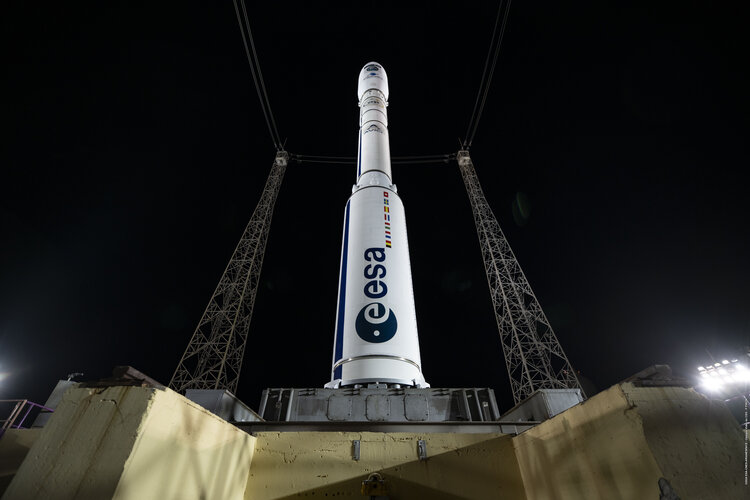The last Vega rocket of its kind to leave Earth holding the Copernicus Sentinel-2C satellite on the launch pad at Europe's Spaceport in French Guiana waiting for liftoff.
The Sentinel-2 mission is based on a constellation of two identical satellites, Sentinel-2A (launched in 2015) and Sentinel-2B (launched in 2017), flying in the same orbit but 180° apart to optimise coverage and revisit time. Once in orbit, Sentinel-2C will replace its predecessor, Sentinel-2A, while Sentinel-2D will later replace Sentinel-2B.
Sentinel-2C launches on Vega, Europe’s nimble rocket specialising in launching small scientific and Earth observation spacecraft such as to sun-synchronous polar orbits, following the Sun.
Sentinel-2C will be the last liftoff for the Vega rocket – after 12 years of service and this final flight, the original Vega is being retired to make way for an upgraded Vega-C.
Fittingly the Sentinel-2A and Sentinel-2B satellites were launched on Vega marking a logical conclusion to Vega’s stellar roster of satellites launched. Other missions launched by the small and nimble rocket over its lifetime are flagship ESA missions such as technology demonstrator Proba-V, wind monitoring satellite Aeolus, the reentry vehicle IXV and a forerunner to LISA that will measure gravitational waves in space.
Vega ensured that Europe has a versatile, independent access to space, complementing the Ariane family of rockets to launch any satellite to any orbit – continuing with Vega-C and Ariane 6.



 Image:
Last Vega with Sentinel-2C on the launch pad
Image:
Last Vega with Sentinel-2C on the launch pad